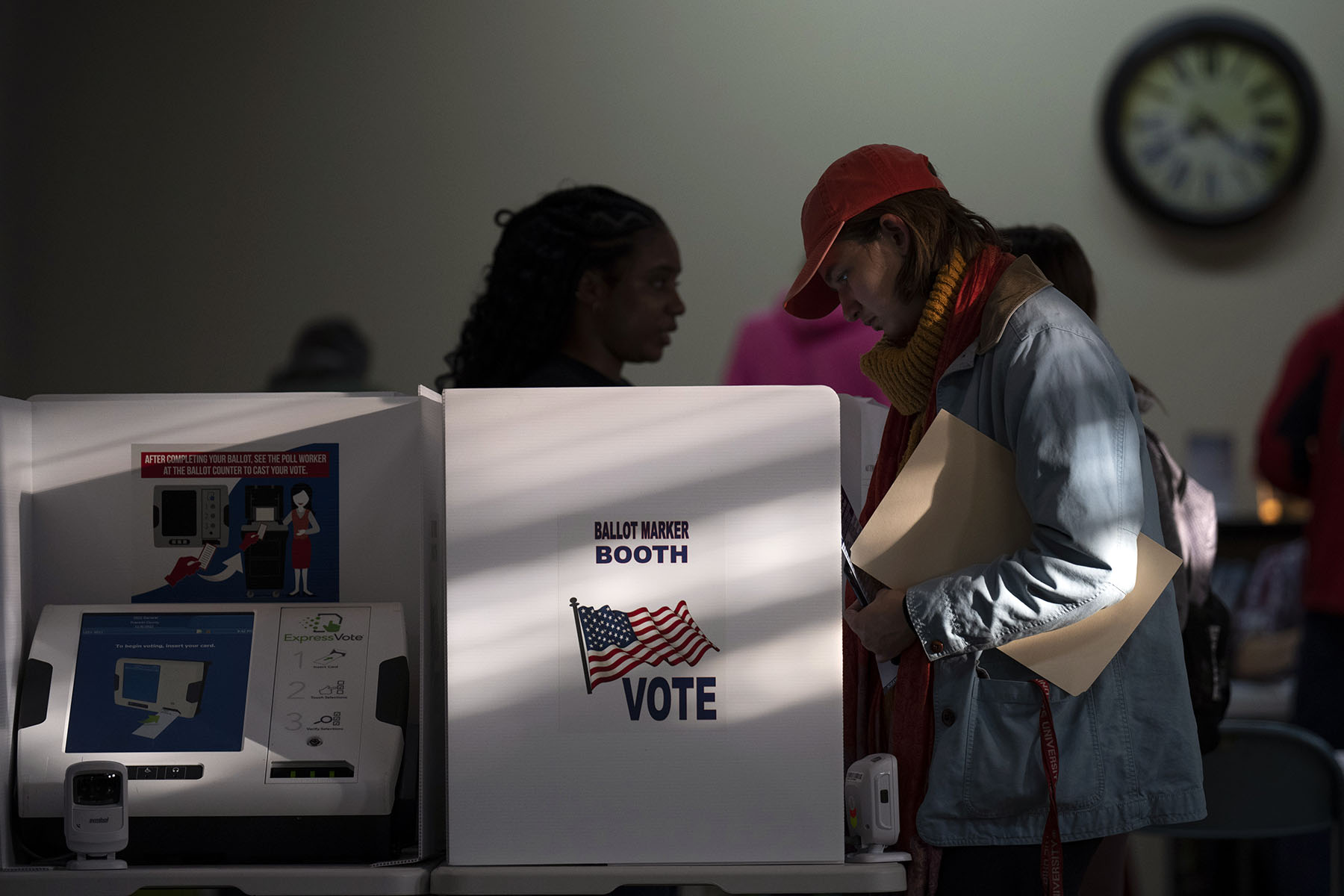Your trusted source for contextualizing politics news ahead of Election 2024. Sign up for our daily newsletter.
Democrats and abortion rights organizers achieved significant wins in the 2022 midterms — and collected hundreds of millions of data points about voters along the way. That data could play a key role for Democratic candidates and abortion rights proponents in 2024.
Many of those groups have used the Democratic Data Exchange, or DDx, a privately run clearinghouse serving as a center for data from Democratic campaigns and progressive advocacy organizations. The group is now serving as the official data hub for the Democratic National Committee and President Joe Biden’s reelection campaign in 2024.
DDx came about after the 2016 election in an effort spearheaded by former presidential candidate Howard Dean to match the GOP’s competitive edge in voter data collection and targeting. Data Trust, the data hub and ecosystem Republicans launched before the 2012 election, counts all the major GOP campaign committees and dozens of top consulting firms among its clients.
DDx was first piloted in the 2019 governor’s race in Kentucky, a red state, in which Democratic Gov. Andy Beshear defeated Republican Matt Bevin. Since then, DDx has been launched in 47 states and collected data on 85 to 95 percent of registered voters in battleground states, the organization says. DDx declined to share the names of specific clients but said more than 500 candidates, campaigns, PACs, parties and advocacy groups are participating in the exchange in the 2024 cycle.
The data in the exchange comes from direct voter contacts like calls, texts and conversations during door-to-door canvassing and from polling data. The organization says it now has more than 3.4 billion unique data points collected by its members, including 1 billion data points gathered in 2022.
DDx serves a unique role as a facilitator of the exchange of data, said Emily Norman, DDx’s CEO. Every outreach and attempted outreach to a voter — a call, text, door knock or direct mail — constitutes a data point in the exchange.
“All the information you collected from how a person had a conversation, how that person described themselves, what they said their most important issue was, how they feel about different candidates in the race — what DDx does is takes that raw data and normalizes it,” she said.
To comply with federal campaign finance regulations, DDx has to obscure details like what organization the data came from. But the available information allows campaigns and other groups to learn more about the people they want to reach, especially the more qualitative details that can only be gleaned from a conversation.
“If you have actually heard someone describe themselves, that is so much more valuable than a probability,” Norman said. “A hard ID of, ‘I support this candidate’ is much is more useful than, ‘We think this person has a 70 percent chance of supporting this candidate based off of a demographic or other piece of information about them.’”
Groups working to defeat Proposition 2, an anti-abortion ballot measure, and a fetal personhood bill in Kentucky, used 3 million voter IDs from DDx data, including information on 65 percent of registered voters and 68 percent of registered women, DDx said.
In Michigan, DDx says member campaigns used 10.5 million IDs from survey responses and information on 90 percent of registered voters, including 92 percent of registered women voters. Democrats kept the governor’s office and gained a trifecta in the state government, and voters passed a landmark constitutional amendment establishing reproductive rights protections.
DDx data was also used to help campaigns and other groups ensure 3,500 absentee ballots got counted in Arizona and to identify key counties for the December 2022 U.S. Senate runoff in Georgia.
“As the available data continues to be improved and refined, participants in the exchange will be able to identify tens of millions of pro-choice voters to [get out the vote] in favor of pro-choice candidates, to beat back the GOP’s proposals attempting to restrict abortion access, and pass ballot initiatives that affirm reproductive rights,” the organization said.
The data gathered in 2022 will come into play in 2024, when abortion is likely to be a vital issue in elections up and down the ballot. Abortion rights advocates are also aiming to get pro-abortion-rights constitutional amendments on the ballot in Ohio in 2023 and Florida and South Dakota in 2024. Abortion rights ballot measures ran ahead of top Democratic candidates in many states in the 2022 midterms, creating a wider universe of pro-abortion rights voters for groups in the exchange to draw on.
“DDx is one of the greatest assets the pro-choice movement has in a post-Roe world,” Cecile Richards, co-chair of Democratic super PAC American Bridge 21st Century and the former CEO of Planned Parenthood, said in a statement to The 19th.
“You can draw a direct line from DDx to key victories – in blue, purple and red states,” Richards said. “Looking ahead to 2023 and 2024, DDx will be crucial to helping Democrats and progressive groups in tough states like Ohio and Florida beat back further right-wing attacks on reproductive rights.”
DDx can play a particularly useful role in ballot measure campaigns, which often operate on a more compressed timeline and have different dynamics than a traditional campaign. The exchange, Norman said, can help ballot measure campaigns build up a volunteer base quickly and allow them to see “ecosystem-wide” what other activity is taking place around their ballot measure and where other groups are already talking to voters in specific areas.
“And so from that, you can prioritize, ‘Where else do I need to talk? Where don’t I see the work happening?’ and not necessarily do duplicative work,” Norman said. “And then at the end as you go into GOTV and that final turnout, it’s not just the sum of IDs that you’ve collected on your ballot initiative, but the sum total of all of the IDs collected across all the organizations on the ballot initiative.”







